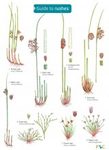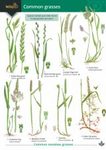Distribution Atlas
By: Garth N Foster(Author), David T Bilton(Author), M Hammond(Author), BH Nelson(Author)
306 pages, 45 colour photos, 98 b/w distribution maps
![Atlas of the Hydrophiloid Beetles of Britain and Ireland Atlas of the Hydrophiloid Beetles of Britain and Ireland]()
Click to have a closer look
About this book
Customer reviews
Related titles
Recommended titles
About this book
This work covers the hydrophiloid beetles in five families, the Helophoridae, Georissidae, Hydrochidae, Spercheidae and the Hydrophilidae. One hundred and four species are reviewed, all of them being recorded from Britain, 70 with certainty from Ireland, 52 from the Isle of Man, and 63 from the Channel Isles. One hundred and one distribution maps are provided along with photographs of many sites.
This atlas is intended to be complementary to the atlas of predaceous water beetles or Hydradephaga already published. Both are rather more than just sets of distribution maps, with as much effort made to identify gaps in the knowledge as to discuss the basics of their identification, genetics, and biology.
Professor Frank Balfour-Browne, in his 1958 treatment of this group was obliged to admit that he had ultimately found these "palpicorns" as interesting, if not more so, than the better known Hydradephaga. His study of their distributions is extended here to cover the terrestrial species, mainly in Helophorus subgenus Empleurus and in the subfamily Sphaeridiinae of Hydrophilidae. The latter are largely associated with dung though many types of decaying material are fed upon by the adults, with their larvae being mainly predaceous in moist if not aquatic habitats.
The present recording scheme began in 1979, and over 149,000 records have been acquired through the activity of over 670 recorders, supported by the Biological Records Centre in Britain and the National Biodiversity Data Centre and CEDaR in Ireland.
Customer Reviews
Distribution Atlas
By: Garth N Foster(Author), David T Bilton(Author), M Hammond(Author), BH Nelson(Author)
306 pages, 45 colour photos, 98 b/w distribution maps
"To call this work an ‘atlas’ does not do it justice, as it is far more than that. It includes accounts of 104 species based on about 149,000 records. Unlike some distribution atlases, this one includes the whole of Ireland, which has 70 known species, and the Channel Isles, which have 63 species.[...] No photographs of the species are included, but anyone with enough of an interest in these beetles will surely also own the RES Handbook, which includes images of all species. [...] A review of scarce and threatened species can be freely downloaded. Together, these provide as detailed an account as is presently possible for the majority of our water beetles and allied species, and far more information than is easily available for most other groups of beetles."
– Richard Wright, British Wildlife 30(2), December 2018
"As a template for future invertebrate atlases, this is an inspiring work. [...] My overall impression is that if you're at all interested in the distribution of this beetle group then you should buy this book. Equally, if you want to see what an atlas should aspire to be, then buy this one. I'm taking notes for my own..."
– Steve Lane, Atropos 62, 2018

























![Nordens Dyngbaggar [Dung Beetles of Northern Europe]](http://mediacdn.nhbs.com/jackets/jackets_resizer_medium/21/215092.jpg?height=150&width=107)



















